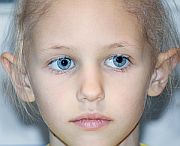
SUNDAY, May 31, 2015 (HealthDay News) — Treatment adjustments have significantly increased the life spans of childhood cancer survivors in the United States and Canada, according to new research.
Deaths among five-year survivors 15 years after diagnosis have been halved since the 1970s — falling from just over 12 percent to 6 percent, the study of more than 34,000 people revealed.
“Fifty years ago, only one in five children would survive cancer, and today over 80 percent are alive five years after diagnosis,” said the study’s lead author, Dr. Gregory Armstrong. He is a pediatric oncologist at St. Jude Children’s Research Hospital in Memphis, Tenn.
The researchers said changes in treatment that reduce long-term health risks — including heart and lung problems, and second cancers — is likely the reason for the positive trend. Modification of radiation and chemotherapy treatments has been particularly beneficial, the study authors said.
“Now, we’ve not only helped more children survive their primary cancer, but we’ve also extended their overall life span by reducing the overall toxicity of treatment in more modern eras,” Armstrong said.
The findings were scheduled for presentation Sunday at the American Society of Clinical Oncology (ASCO) annual meeting, in Chicago.
Up to 18 percent of people who survived cancer as children die within 30 years, previous research has shown. Although the risk of cancer worsening or returning levels off over time, death from other medical problems increases every year a person survives beyond their cancer diagnosis, the study authors explained in an ASCO news release.
This U.S. National Institutes of Health-funded study looked at data on the long-term health outcomes of five-year survivors of childhood cancer who received their diagnosis between 1970 and 1999. The researchers assessed death rates among the participants by analyzing a computerized index of death record information.
Five-year survivors were followed for an average of 21 years after diagnosis. The researchers found that 12 percent died during that time. Forty-one percent of these deaths were from other health-related causes, including the lingering effects of cancer therapy, the study authors said.
But total deaths from other health-related causes dropped from 3.5 percent to 2.1 percent in this time period, the findings showed. Children diagnosed more recently had a significantly lower risk of death from other health problems, including cancer or heart or lung disease, the study authors found.
Lower death rates were mainly attributed to fewer deaths from late effects of cancer treatment. This trend was most obvious among survivors of Wilms tumor, Hodgkin lymphoma, and acute lymphoblastic leukemia, the researchers said.
“While the modernization of cancer therapy has probably made the most significant difference, improvements in supportive care for survivors, and screening, detection and treatment of late effects, like new cancers and heart and lung disease, have played an important role in extending their life span as well,” Armstrong said in the news release.
Data and conclusions of research presented at meetings are usually considered preliminary until published in a peer-reviewed medical journal.
More information
The U.S. National Cancer Institute has more about childhood cancer.
Copyright © 2025 HealthDay. All rights reserved.

